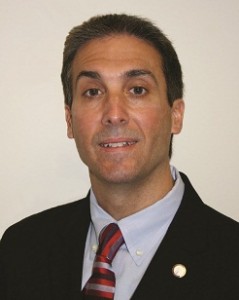 Guest article by Carmen Catizone, MS, RPh, DPh
Guest article by Carmen Catizone, MS, RPh, DPh
During the holiday season, many of us welcome friends and family into our homes, and during these happy occasions, medication safety is easy to forget. However, at a time when more than half of America’s six million prescription drug abusers report getting those drugs from friends and family for free, the AWARxE® Prescription Drug Safety Program is encouraging patients and caregivers to take steps to secure their medications and protect their loved ones from drug addiction or accidental ingestion.
1. Store Medications in a Safe Place
Whenever possible, make sure to store both prescription and over-the-counter medicines in locking cupboards or medication safes. Locked medication storage is one of the most effective ways to avoid unintentional use or misuse by family or visitors to your home. If a locking storage space is not available, you can also store medications in a linen closet, dresser drawer, or similar location that is hidden from sight and out of reach of young children.
Storing medications in bathroom medicine cabinets, on counters, or other easily accessible areas can put curious young children at risk for accidental ingestion. This is especially important because nearly 10,000 children under the age of six are hospitalized each year for symptoms related to accidental ingestion of prescription drugs, according to a recent study.
2. Track Medications to Ensure Proper Use
AWARxE encourages you to create a list of all the medications [6/3/2024 TCV Update: URL on FDA site no longer available] you take and to create medication lists for those under your care. The list should include the name of the medication, the dosage, and the name of the prescriber, and should be carried with you at all times.
In an emergency, health care providers can use the list to make informed decisions when providing treatment. A medication list can also help ensure continuation of regular medications, and prevent drug-drug interactions.
Providing a medication list to doctors and pharmacists can help them in prescribing and dispensing medications and helps to ensure that your patient data, or the patient data of those in your care, is up-to-date.
Keeping track of the number of pills in each bottle is also recommended if you want to ensure that no pills have fallen into the wrong hands, such as those of someone looking to abuse medications. You can check the inventory of pills each week to make sure the correct number of pills remain in the bottle.
3. Dispose of Unneeded Drugs
If you have medications in your home that are no longer needed or expired, AWARxE encourages you to dispose of them through local medication disposal programs. Removing unneeded drugs, helps prevent misuse and abuse.
The Get Local section on the AWARxE website provides medication disposal drop box locations in almost every state. (“Select your state” at the upper right corner of the page then scroll down on the page to see the locations.) Generally, police stations may accept controlled substance prescription drugs (such as certain pain medications), and community and pharmacy drop box programs may accept all other drugs.
More disposal sites will likely be available in the future, as Drug Enforcement Administration (DEA) has released new rules that allow pharmacies to collect controlled substances from patients for disposal. To become authorized collectors under the new rules, pharmacies must put new processes and procedures in effect to ensure that the collected drugs are destroyed safely and securely, and that all DEA requirements are met. It may take some time for these changes to be implemented.
If there are no drug disposal sites near you, there are options for disposing of drugs at home. The information that comes with your prescription may provide instructions on home disposal. If there are no instructions for disposal, you can throw the drugs in your home garbage. But first, take them out of the container and mix them with an undesirable substance like coffee grounds or cat litter. Seal the mixture in a sealable bag, empty can, or other container that can be disposed of in the garbage.
More information about safe drug disposal is available on the NABP / AWARxE Medication Disposal page.
CARMEN A. CATIZONE, MS, RPh, DPh, is the Executive Director of the National Association of Boards of Pharmacy® (NABP®) and the Secretary of the Association’s Executive Committee. He serves as a Governor of the Pharmacy Technician Certification Board (PTCB) Board of Directors and Chair of the PTCB Certification Council.
AWARxE® is a consumer protection program provided by the National Association of Boards of Pharmacy Foundation®, an impartial professional organization founded in 1904 that supports the state boards of pharmacy in creating uniform regulations to protect public health.
[UPDATE: AWARxE is part of the National Association of Boards of Parmacy – NABP]








